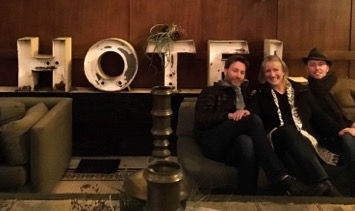

After scouring the Hunter Valley for outstanding semillon last year, our team of Canadians—Véronique Rivest (Soif Bar à Vin, Gatineau), Brad Royale (Canadian Rocky Mountain Resorts, Calgary) and John Szabo, MS (WineAlign.com, Toronto)—returned to seek out the most expressive pinot noirs in Oregon’s Willamette Valley. Szabo reports.
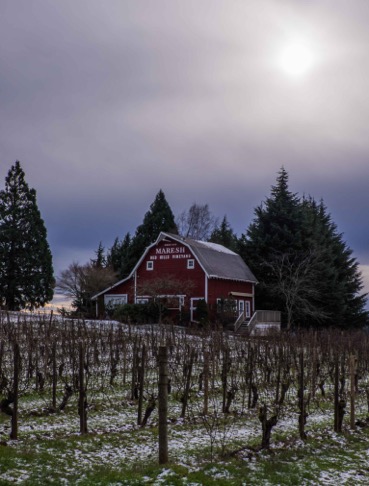

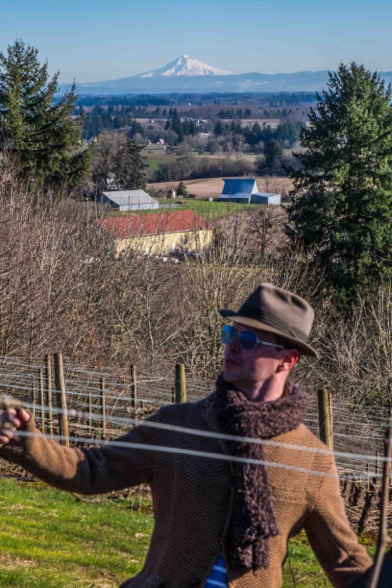

Pinot noir may not be defined by the Willamette Valley, but the Willamette is unquestionably defined by pinot noir. Few other New World wine region are so unswervingly dedicated to a single grape (Napa cabernet might be the closest analogue). Fully three-quarters of the valley’s plantings—14,417 acres—are devoted to pinot noir vines. The history of pinot noir in the valley stretches back to David Lett’s pioneering plantings in the Dundee Hills in 1966, and what was once a lonely whisper of a pinot noir idyll in the Pacific Northwest has grown to a roaring oratory, with a captive audience from coast to coast. You’ll hear, of course, of Willamette pinot gris, and increasingly of chardonnay, along with a handful of other worthy varieties, but they are the extras on pinot noir’s stage.
Pinot noir may be a new arrival, but the foundations for the region’s terroir were laid over the last 50 million years. Tectonic plate subduction, crumpling and continental scraping, uplifting and accretion of marine sediments, eruptive volcanic arcs and hotspots, cataclysmic flood cycles of basalt and water, and more mundane subsequent shaping through wind, water erosion, and fluvial and colluvial bustle, have all contributed to the richly varied patchwork of Willamette soils.
Throw in the maniacal devotion of Willamette Valley pinot noir producers and you have the makings of a Broadway hit starring only pinot noir, but in an astonishing array of soil-derived melodies and harmonies. With no fewer than 531 wineries in the Willamette Valley, this show could go on for years.
In our case, we started out in a former schoolhouse in Newberg, blind tasting some 65 pinots on our first day. The wines were ordered by soil type and AVA, and we sniffed our way through a kaleidoscope of fruit flavors spanning the spectrum from bright red to near pitch black, from fresh and tingly to plush and voluptuous. Tannins shape-shifted from filigreed lace to rough-hewn wool. It’s the dirt, of course. Climate, too, has its say. After narrowing down the options, it was time to set off and unravel the mysteries and balance the equations.
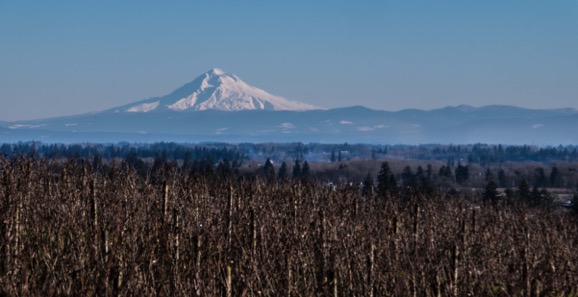

With the looming volcanic peak of Mt. Hood watching like a sentinel over the Valley, and with wintry weather more familiar to a Canadian than an Oregonian, we journeyed to the highest and most remote points of the Valley. We kicked up the marine sediments of Yamhill-Carlton and Ribbon Ridge, and scraped the windblown loess of the eastern Chehalem Mountains facing directly into the gaping Columbia Gorge. We dug deep into the thick, volcanic-basalt clays of the Dundee Hills, the soil smoldering red with oxidized iron, and our boots crunched winter grasses covering the thin, wind-scraped volcanic Nekia soils of the Eola-Amity Hills, where naked rock flowers on the high ridge crests.
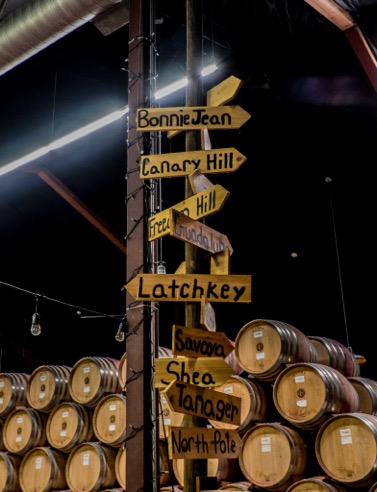

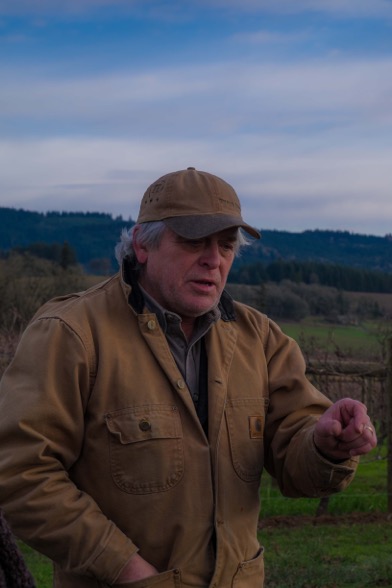

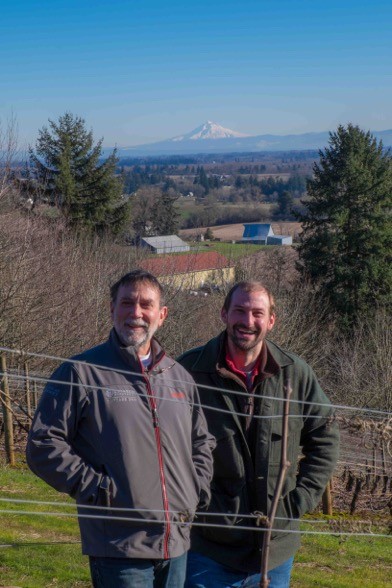

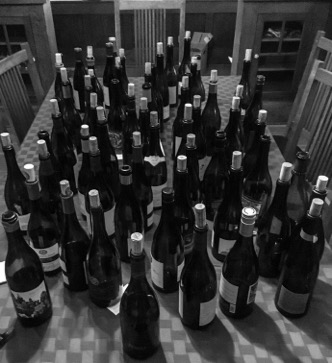

But what of the human factor of terroir? To better understand this, we met and broke bread and glasses (figuratively, mostly) with many of the pioneering families (first and second generations) who established the Oregon wine industry in the 1960s and 1970s, meeting with influential figures like Jason Lett (Eyrie Vineyards), Luisa Ponzi (Ponzi), David Adelsheim (Adelsheim) and Pat Dudley (Bethel Heights).
We also encountered many “second wave” protagonists of the 1980 and 1990s who continued to build the Willamette’s reputation, like former chef Mark Vlossak (St. Innocent), former engineer Harry Petersen-Nedry (Chehalem), soil-obsessed Ken Wright, biodynamic advocate Doug Tunnell (Brickhouse), introspective Steve Doerner (Cristom), former rock star Jay Christopher Somers (J. Christopher), boot-strapping Jim Prosser (J.K. Carriere), and the auto-didactic Scott Shull (Raptor Ridge).
We met some of the newest generation of producers who stood happily on the shoulders of their predecessors, getting off to a head start in this millennium as Willamette Valley pinot emerged as one of America’s great wines—the likes of Josh Bergström (Bergström Wines), Maggie Harrison (Antica Terra), Larry Stone, MS (Lingua Franca) and Ken Pahlow and Erica Landon (Walter Scott).
And just when we thought no stones were left unturned, along came Andrew Becker of A.D. Beckham to tell us of his mission to hand-craft his own clay pots in which to age his rapidly-improving wines from Parrot Mountain (Chehalem Mountain AVA), and Chad Stock of Minimus wines, a self-declared tinkerer in search of satisfaction and sustainability through less obvious heroes like grüner veltliner, a rare mutation of pinot blanc (the so-called “Gouges” clone from Domaine Henri Gouges in Nuits-St-Georges), and a multi-dozen-variety field blend.
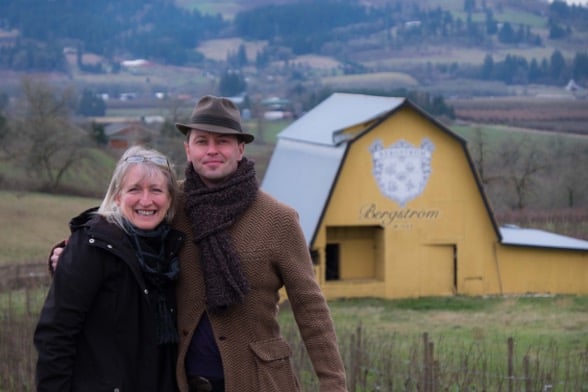

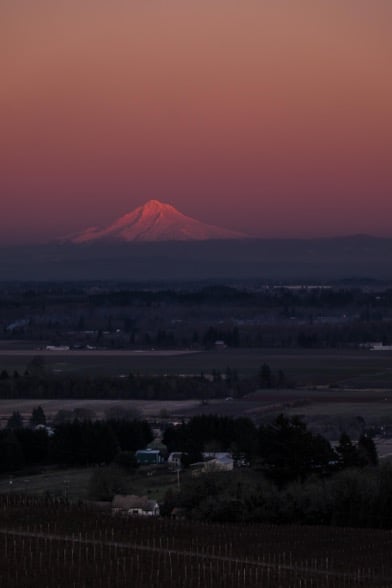

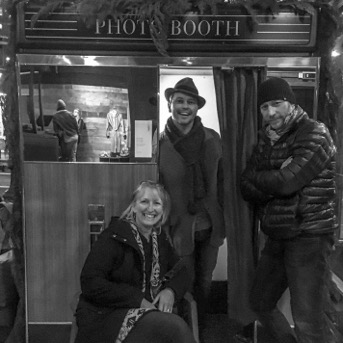

On a more human level, we marvelled at the simultaneously tragic and heart-warming tale of Jimi Brooks, whose winery still flourishes to this day after his untimely passing in 2004, thanks to a dozen good Willamette souls who stepped in and offered to complete the ’04 harvest on behalf of Jimi’s young son Pascal and sister Janie, at their own expense. Damned if they were going to let one of their most promising new competitors fade away that easily.
And that sums up, in one poignant tale, the legendary collegiality of Willamette growers. Advice, a spare pump, or a drinking buddy is never more than a phone call (text, MMS) away. Don’t be surprised if your tasting with multiple Willamette growers evolves into an impromptu self-help session as they dig into one another’s wines with positive criticism and probing questions.
Their wines, meanwhile, quickly sprouted into a forest on the dining room table of our charming 97-year-old cottage as we sought to weave our impressions into a coherent evaluation of the region.
In the end, all that was missing from our adventure was a formal initiation into Portland by a local for, say, a drink at Clyde Common and a photo booth moment at the Ace Hotel, and perhaps a fine chardonnay-sauced dinner at one of the city’s best new seafood restaurants, like Headwaters, where we might compare the Willamette’s emerging chardonnays with the best from Burgundy (Sauzet, Roulot, Lafon, etc…). Oh, wait. That happened on our first afternoon. Seems like a lifetime ago.
Now, back to the fireplace to warm our hands on this freezing Willamette night.
This story appears in the print issue of jan 2019.
Like what you read? Subscribe today.















